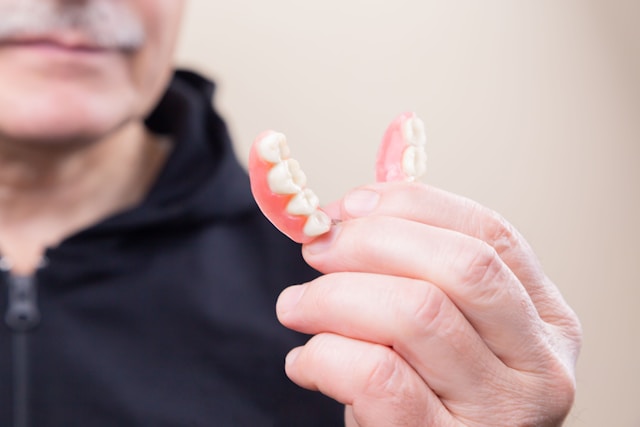A tonsillectomy, or surgical removal of the tonsils, is a popular treatment that is frequently carried out on children to treat sleep apnea, chronic tonsillitis, and other conditions. Even though it’s a very successful procedure, some patients still worry about tonsil regrowth afterward. “Can Tonsils Grow Back After Being Removed? – Tymoff” This article examines the chances of tonsils growing back, looks at the causes of recurrence, and provides information on what to do if regrowth does happen.
Recognizing the Function of Tonsils
The tonsils are two tissue pads that are situated one on each side in the back of the throat. They are a component of the lymphatic system, which is essential to the body’s fight against infection. Filters, the tonsils capture germs and viruses that enter the body through the mouth and nose. Children’s tonsils are bigger and have stronger immune system function. But their influence wanes with age.
How Come Tonsils Are Removed?
When tonsillitis recurs, which is characterized by recurrent throat infections, tonsillectomy is usually advised. A sore throat, trouble swallowing, fever, swollen glands, and earaches are some of the signs and symptoms of tonsillitis. Removal becomes a possibility when tonsillitis progresses to a chronic stage, causing considerable discomfort and affecting quality of life.
Obstructive sleep apnea is another prevalent cause of tonsillectomy. This type of sleep disturbance is brought on by larger tonsils obstructing the airway while you’re asleep, which causes breathing pauses and irregular sleep patterns. Kids who have sleep apnea frequently have behavioral issues, difficulties focusing, and daytime tiredness.
The Procedure for Tonsillectomy
The surgical procedure known as a tonsillectomy is usually carried out under general anesthesia. There are several ways to remove tonsils, and each has benefits and drawbacks of its own. A popular procedure is a dissection tonsillectomy, in which the tonsil tissue is carefully separated from the surrounding muscles by the surgeon. Another method is coblation tonsillectomy, in which the tonsils are removed with little or no bleeding using radiofrequency energy.
The age, anatomical structure, and purpose of the tonsillectomy all influence the surgical procedure that is chosen. The aim, no matter the method, is to eliminate all tonsil tissue in order to stop regrowth.
How Likely Is It That Tonsils Will Recur After Removal?
Fortunately, tonsil regrowth following a tonsillectomy is not very common. Recurrence rates of about 2% are suggested by studies. This indicates that the tonsils are typically surgically removed, leading to a dramatic improvement in the patient’s initial symptoms.
Motives for Tonsil Regrowth
‘Can Tonsils Grow Back After Being Removed? – Tymoff’ Tonsil tissue may grow back after surgery for the following reasons, however they are uncommon:
Incomplete removal: Small pockets of tonsil tissue that are surgically removed but are still lodged in the surrounding tissues may eventually regenerate.
Epithelialization: Occasionally, the tonsil tissue will form as the throat’s lining (epithelium) grows over the surgical site. This may seem worrisome, but it is not real regrowth.
Tonsil Regrowth Signs and Symptoms
Differentiating tonsil regrowth from other disorders of the throat might be difficult. These indications may point to tonsil regrowth:
Continuous painful throat
swallowing difficulties
recurring throat infections
Having a sore throat feeling
After a time of improvement, snoring or sleep apnea returned
Following a tonsillectomy, it’s critical to see your doctor for a precise diagnosis if you encounter any of these symptoms. After doing a physical examination, they could suggest doing more tests, such as imaging investigations or a throat swab, to confirm or rule out tonsil regrowth.
Options for Tonsil Tissue Recurrence Treatment
Treatment choices will vary based on the severity of your symptoms if your doctor confirms tonsil regrowth. In certain instances, monitoring may be adequate, particularly if the regrown tissue is little and not posing a serious risk.
A repeat tonsillectomy might be required, nevertheless, if the regrowth is producing troublesome symptoms. Revision tonsillectomy is the technique used to remove the tonsil tissue that is still present in order to stop future recurrence.
Consolation and Long-Term Gains from Tonsillectomy
Treatment for chronic tonsillitis, sleep apnea, and related conditions can be achieved safely and effectively with tonsillectomy. Even in the unlikely event that tonsil regrowth happens, there are ways to address it.
A tonsillectomy typically provides patients with long-term symptom alleviation and enhances their overall quality of life. Even with the tonsils removed, the body can still fight infection by using other lymphatic system components.
In conclusion / Can Tonsils Grow Back After Being Removed? – Tymoff /
An effective treatment for treating a variety of throat-related issues, tonsillectomy also minimizes discomfort, reduces recurrent infections, and improves sleep quality. ‘Can Tonsils Grow Back After Being Removed? – Tymoff’ Though rare, tonsil regrowth is a possibility. For optimal results, discuss any post-operative issues with your doctor and heed their advice. In order to facilitate healing and reduce the chance of problems, this entails keeping follow-up appointments, properly controlling pain with medication, and practicing good dental hygiene.



